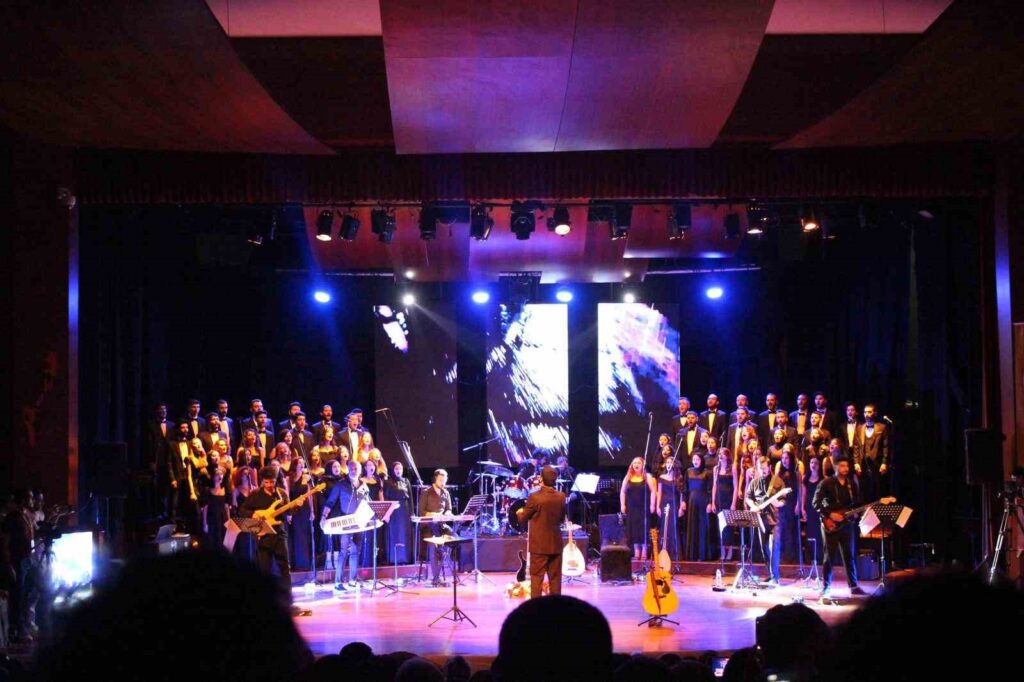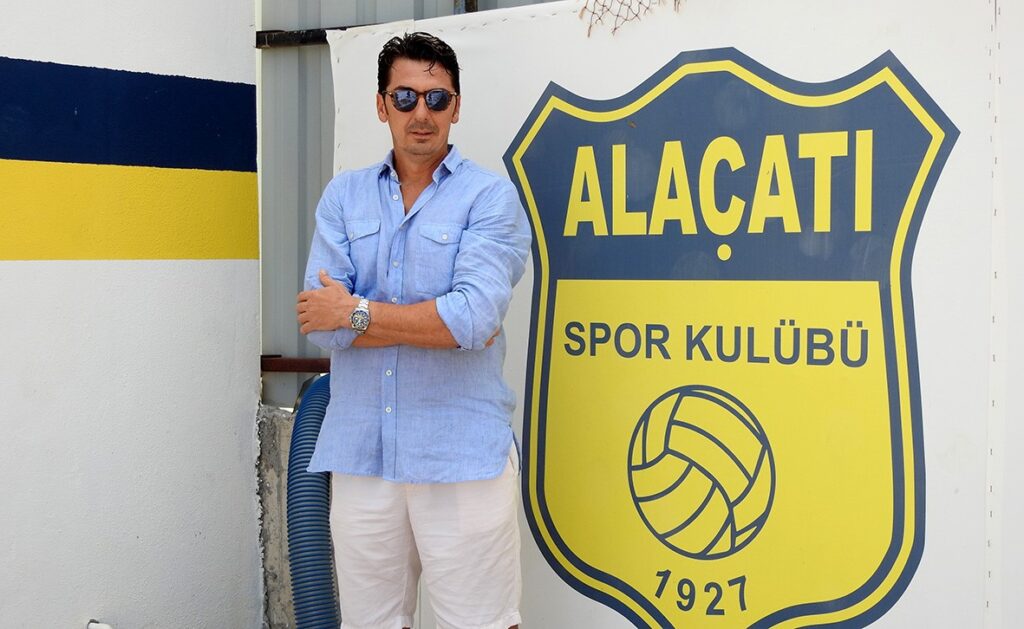Listed the evidence that the tomb of Yunus Emre is in Kula.
MANİSA (İHA) – In many cities of Turkey, there are shrines and mausoleums, yet a definitive proof regarding the exact location of the real grave of Yunus Emre, the pioneer of Sufism and Turkish poetry in Anatolia, has not been found to this day. Yunus Emre and …

MANİSA (İHA) – Despite numerous tombs and shrines in many cities of Turkey, a definitive evidence regarding the exact location of the real tomb of Yunus Emre, the pioneer of Sufism and Turkish poetry in Anatolia, has not been found to this day. The Yunus Emre and Tapduk Emre Tomb in the Kula district of Manisa, where the local people believe to be the real tomb of Yunus Emre, is shown as evidence by the famous poet’s poems, the courtyard of the lodge that has survived to the present day, and the depictions of an axe and a key on the tombstone. The shrine in the Kula district of Manisa, where the graves of the great mystic and folk poet Yunus Emre and his teacher Tapduk Emre are believed to be located, continues to host thousands of visitors every year. Named after Yunus Emre, the shrine located in Emre Village with a population of about 120 people draws attention with its architecture. It is not definitively known where and in which year Yunus Emre was born, some sources claim that he was born in 1238 and died in 1320. Despite having tombs and shrines in many cities of Anatolia, there is still no clear information on the exact location of Yunus Emre’s real tomb. Süleyman Kahraman, the 5th generation grandson of Hatice Kahraman, who works as a guide for the Kula Municipality at the Yunus Emre and Tapduk Emre Tomb in Kula, Manisa, shared with the IHA correspondent the evidence they believe in regarding the historical background of the shrine and why they think Yunus Emre’s real tomb is located there. Süleyman Kahraman stated, ‘Elders such as Tapduk Emre, Yunus Emre, Hacı Bektaş-ı Veli, Somuncu Baba, Sarı Saltuk are all followers of Hoca Ahmet Yesevi. These elders migrated from Central Asia to Anatolia due to the Mongol invasion. When Tapduk Emre came to Anatolia, he took refuge in the Saruhanogullari Principality and spent his life under the rule of that bey. Tapduk Emre was a skilled mason, so when he came to Emre Village, he built a lodge, madrasa, and a bathhouse here. The bathhouse has survived until today without deterioration. The fountains still flow. Moreover, the ablution fountain of the lodge has also survived to this day.’ Continuing by narrating the life of Yunus Emre, who was a student of Tapduk Emre, Kahraman said, ‘We know that Yunus Emre spent half of his life around Konya and Karaman. According to the sources we read, there was a famine in the villages of Karaman. As a result of this famine, Yunus Emre, selected by the villagers, was sent to the lodge of Hacı Bektaş-ı Veli. He was subjected to a great test there. Seeing the potential qualities in Yunus, Veli asked Yunus, ‘Do you want wheat or divine grace?’ Yunus answered wheat. When Yunus took the wheat and returned to his village, he narrated what had happened to him. The leaders of the village gathered and said, ‘Yunus, you have made a big mistake. Wheat runs out, but divine grace does not. Go back to your teacher and seek divine grace.’ When Yunus returned to Hacı Bektaş-ı Veli, Veli said, ‘We made that offer to you. We offered you divine grace, but you did not accept it. You will embark on a journey of Emre.’ ‘Emre’ means those who are in love with Allah. Those who walk in the path of Allah, who dedicate themselves entirely to Allah, are called Emre and Eren. Yunus came to Emre Village in Kula to be able to take on this name and became one of the students of Tapduk Emre here. He completed his life here. Tapduk Emre assigned him the duty of woodcutting. He personally brought wood from places like Çıngırak Deresi, Yılanlı Dağı, İmam Dere, Çatalçeşme to the lodge and bathhouse. These woods were used especially for cleanliness purposes in the bathhouse. Yunus never brought crooked or twisted woods to the lodge. He always brought straight woods like a pen. During his apprenticeship, Yunus Emre began to have doubts in his heart. ‘I am receiving education, I show respect and courtesy. When will I rise in the eyes of Allah, when will I possess divine grace, when will I assume the title of a dervish?’ He was troubled by doubts in his heart and soul. After a while, he left the lodge. He says in his poems, ‘I walk from town to town, the sheikh’s name is heard from mouth to mouth, see me in exile, what love did to me.’ Our dervish Yunus found the love of Allah by wandering, he preached Islam by traveling, he explained the words and attributes of Allah by traveling, and he spread the religion of Islam throughout the Anatolian lands by traveling. Yunus Emre did not realize that he possessed miracles in Tapduk Emre’s lodge. He understood this while traveling. We defend that he established the village as Tapduk Emre’s village. When Yunus Emre traveled, he had poems, words, and verses for his teacher Tapduk Emre in at least 10 couplets. ‘I will return to my sheikh, bury me in Tapduk Emre’s tomb, I will return to my sheikh, let them bury me at the feet of my sultan, I am by the threshold of my sheikh, I cannot return from my sheikh, I became Yunus Emre but I left the lodge without the forgiveness of my sheikh,’ he came back to Emre Village and started to manage Tapduk Emre’s lodge as a Turkmen master after receiving the forgiveness of Tapduk Emre. If we base it on these wills; the fact that our lodge dating back to the Anatolian Seljuk State is here, and the baths, fountains, ablution fountains have remained active until today, the Emre village being one of the first Turkmen villages established in the Western Anatolia region, and the evidence such as Yunus Emre lying at the doorstep of the shrine here increases the possibility of Yunus Emre being here. We also believe that Yunus Emre is buried here.’ Dizilerin Yunus Emre’yi anlatması ziyaretçi sayısını artırdı Kahraman, türbeyi yılda 200 ila 250 bin kişinin ziyaret ettiğini belirterek, ‘Yunus Emre ile ilgili çekilen diziler o dönemde çok etkili oldu. Ziyaretçi sayılarımızı artırdı. Dizi sayesinde Yunus Emre’yi hiç bilmeyenler Yunus Emre’yi tanımak istedi. Dizinin çıktığı günlerde yoğunluk yaşadık’ dedi. Yunus Emre’nin mezar taşında ‘balta’ tasviri detayı Yunus Emre’nin mezarının Kula’da olduğuna dair en büyük kanıtlardan birinin mezar taşının üzerinde yer alan balta ve anahtar tasviri olduğunu belirten Kahraman, ‘Yunus Emre’nin mezarının baş kısmındaki taş Emre köyü halkı tarafından dikilmiş. Bu bölgede Türkmenlerden önce Lidya, Roma ve Bizans İmparatorluğu hüküm sürmüş. Onlardan kalan ve üzerinde savaş baltası yer alan bir taşı Yunus Emre’nin mezarına getirerek, mezar taşı olarak kullanmışlar. Bu taşın üzerindeki balta çift başlıklı bir baltadır. Normalde bu asker baltasıdır ama bunu Emre köyünün halkı simge olarak kullanmışlar. Yunus Emre dergâhta odunculuk yapıyordu. Onu vurgulamak adına bu balta tasvirli taşı baş ucuna dikmişler. Ayrıca baş sarığı da taşın üzerinde yer alıyor. Ayak ucundaki taş da yine Roma döneminden kalma bir taştır. Köyümüzde yaşamış atalarımız, taşın üzerindeki tasvirleri orman motifi ya da dergâh anahtarlarını vurguladığını söylüyor’ dedi.







